Introduction
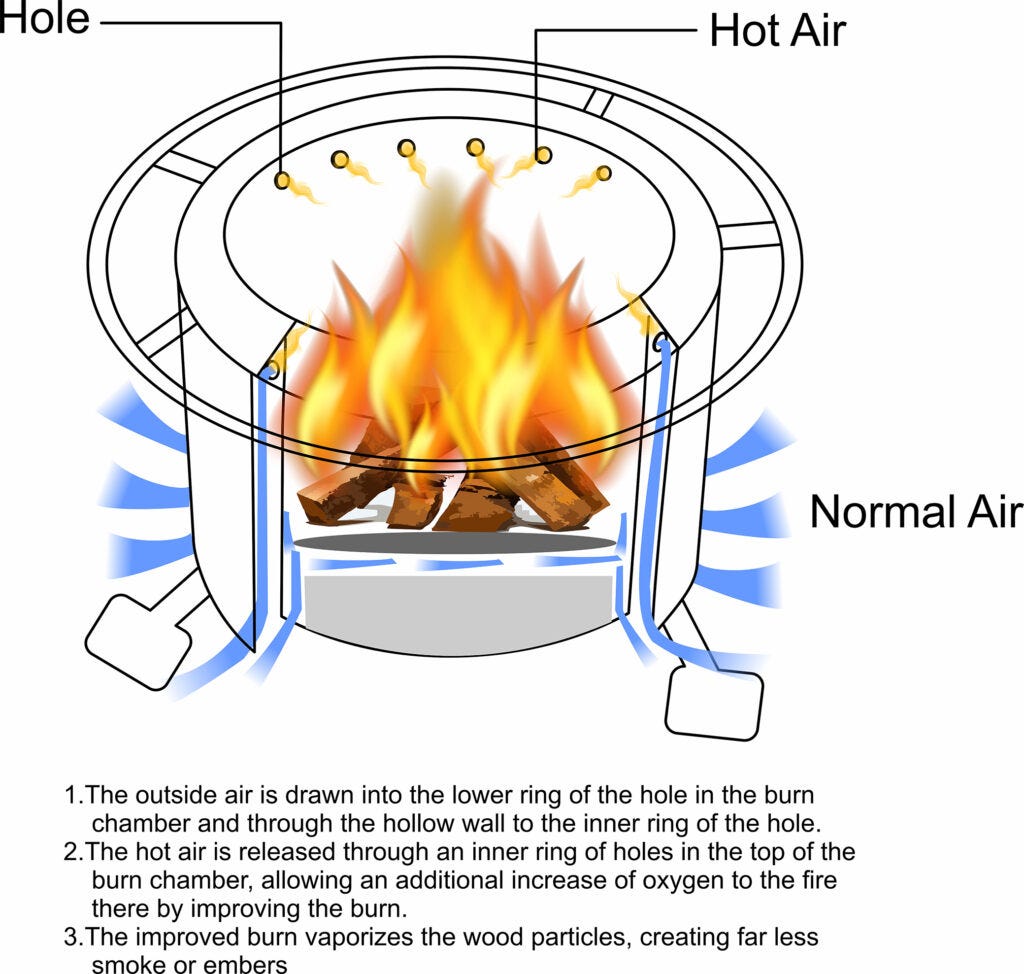
Smokeless fire pits have gained popularity as a more efficient and environmentally-friendly alternative to traditional fire pits. These innovative designs reduce the amount of smoke produced, creating a more enjoyable and pleasant fire experience. While many people have seen smokeless fire pits in action, they may not be aware of how these pits actually work. This article will explore the mechanisms behind smoke reduction in smokeless fire pits, including airflow technology, double combustion chambers, the use of different firewood types, and various design features. By understanding these mechanisms, users can make informed decisions and fully appreciate the benefits of smokeless fire pits.
Brief Explanation Of Smokeless Fire Pits And Their Benefits
Smokeless fire pits are innovative designs that reduce the amount of smoke produced, creating a more enjoyable and pleasant fire experience. These pits work by utilizing airflow technology, double combustion chambers, and the use of specific firewood types to minimize smoke production. The benefits of smokeless fire pits include a cleaner and healthier environment, as well as a more efficient burning process. Users can enjoy the warmth and ambiance of a fire without the annoyance and health hazards associated with smoke. Smokeless fire pits are a great option for anyone who loves outdoor fires but wants to minimize the impact on the environment and their own well-being.
Overview Of How Smokeless Fire Pits Work
Smokeless fire pits utilize various mechanisms to reduce smoke production and create a more enjoyable fire experience. Airflow technology plays a crucial role in smoke reduction by promoting efficient combustion. The double combustion chamber design further helps in burning the wood or charcoal down to ash, eliminating smoke particles. Additionally, the type of firewood used can influence smoke levels. By incorporating these features, smokeless fire pits offer a cleaner and healthier environment while still providing warmth and ambiance.
Airflow Technology

Airflow technology is a crucial component of smokeless fire pits that plays a key role in reducing smoke production. By incorporating an efficient airflow system, smokeless fire pits ensure a sufficient supply of oxygen to the fire. This increased oxygen flow promotes more complete combustion, resulting in significantly less smoke. The design of the fire pit includes vents or openings at the base, which allow fresh air to enter and circulate around the fire. This improved airflow helps to maintain a steady and controlled burn, minimizing the release of smoke particles. Smokeless fire pits leverage airflow technology to create a more enjoyable and smoke-free fire experience.
Importance Of Airflow In Smoke Reduction
The airflow in smokeless fire pits plays a crucial role in reducing smoke production. By ensuring a sufficient supply of oxygen to the fire, the airflow promotes more complete combustion, resulting in significantly less smoke. The design of smokeless fire pits incorporates vents or openings at the base, allowing fresh air to enter and circulate around the fire. This improved airflow helps maintain a steady and controlled burn, minimizing the release of smoke particles. By prioritizing airflow, smokeless fire pits create a more enjoyable and smoke-free fire experience.
Explanation Of Airflow Mechanisms In Smokeless Fire Pits
In smokeless fire pits, the airflow mechanisms play a fundamental role in reducing smoke production. These fire pits are designed with vents or openings at the base, allowing fresh air to enter and circulate around the fire. This improved airflow supplies the fire with an adequate amount of oxygen, promoting more complete combustion. As a result, the fire burns more efficiently, minimizing the release of smoke particles. By prioritizing the airflow, smokeless fire pits provide a smoke-free and enjoyable fire experience.
Double Combustion Chamber
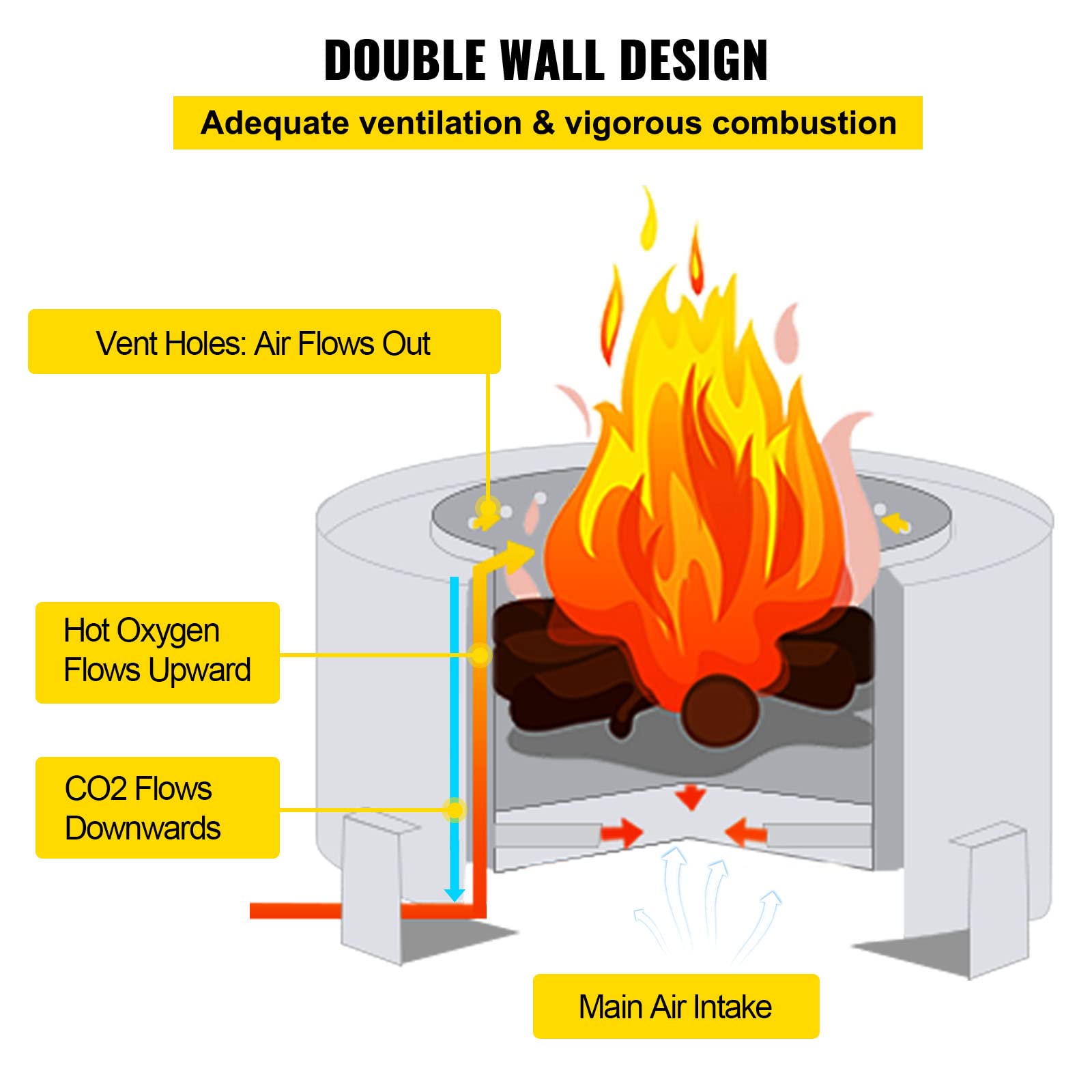
The double combustion chamber is a key feature in smokeless fire pits that helps to further reduce smoke production. This chamber is designed to create a secondary burn of smoke and other combustible gases that are not completely burned in the primary burn. By providing a secondary burn, the double combustion chamber enhances the burning efficiency of the fire, resulting in even less smoke being released into the air. This innovative design feature significantly contributes to the smokeless nature of these fire pits.
Function Of The Double Combustion Chamber In Reducing Smoke
The double combustion chamber is a crucial component in smokeless fire pits as it plays a key role in reducing smoke. This chamber is specifically designed to create a secondary burn of smoke and unburned gases from the primary combustion. By providing a second burn, the double combustion chamber significantly enhances the efficiency of the fire, resulting in minimal smoke being released into the air. This innovative design feature greatly contributes to the smokeless nature of fire pits, making them an excellent choice for a clean and enjoyable outdoor experience.
How Double Combustion Chambers Enhance Burning Efficiency
Double combustion chambers in smokeless fire pits play a crucial role in enhancing burning efficiency. These chambers create a secondary burn of smoke and unburned gases from the primary combustion. By providing a second burn, the double combustion chambers ensure that as much fuel as possible is completely burned. This helps to maximize heat output and minimize the amount of smoke produced. The design of double combustion chambers optimizes combustion, resulting in an efficient and smokeless fire pit experience.
Use Of Firewood Types
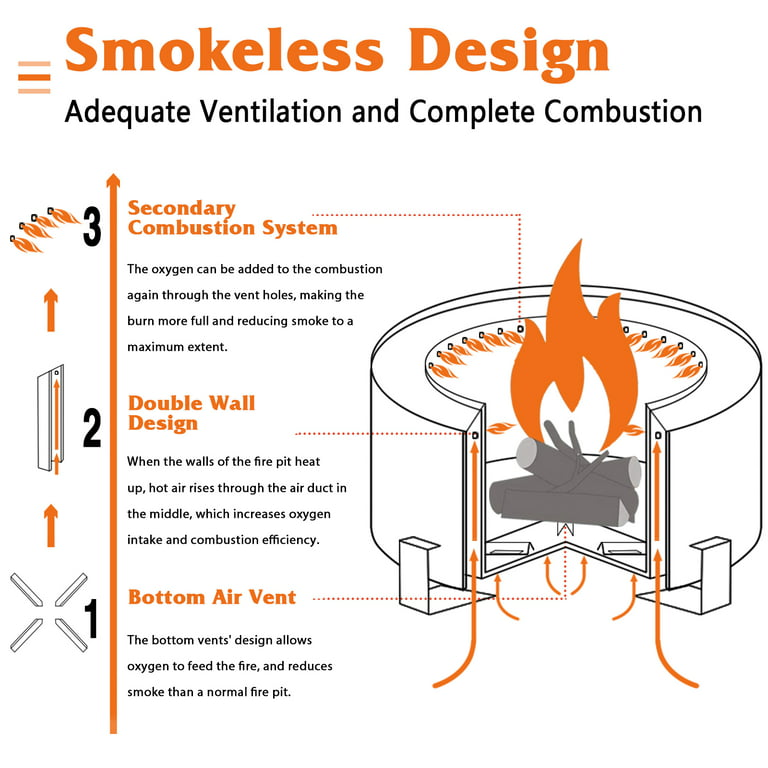
The type of firewood used in a smokeless fire pit can greatly impact the amount of smoke produced. Hardwood, such as oak or birch, is preferred for its higher heat output and cleaner burn. Softwood, like pine or cedar, tends to produce more smoke due to its higher resin content. Additionally, seasoned firewood with low moisture content is preferred as it burns more efficiently and produces less smoke. By selecting the right type of firewood, users can further enhance the smoke reduction capabilities of their smokeless fire pit.
Impact Of Firewood Types On Smoke Production
The type of firewood used in a smokeless fire pit can greatly impact the amount of smoke produced. Hardwood, such as oak or birch, is preferred for its higher heat output and cleaner burn. Softwood, like pine or cedar, tends to produce more smoke due to its higher resin content. Additionally, seasoned firewood with low moisture content is preferred as it burns more efficiently and produces less smoke. By selecting the right type of firewood, users can further enhance the smoke reduction capabilities of their smokeless fire pit.
How Different Types Of Firewood Affect Smoke Levels In Fire Pits
The type of firewood used in a smokeless fire pit can greatly impact the amount of smoke produced. Hardwood, such as oak or birch, is preferred for its higher heat output and cleaner burn. Softwood, like pine or cedar, tends to produce more smoke due to its higher resin content. Additionally, seasoned firewood with low moisture content is preferred as it burns more efficiently and produces less smoke. By selecting the right type of firewood, users can further enhance the smoke reduction capabilities of their smokeless fire pit.
Design Features
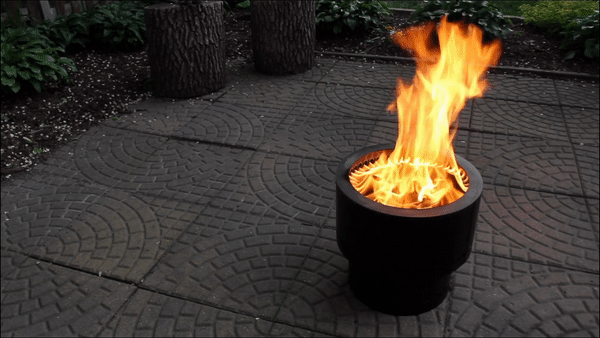
Design Features:
Design plays a crucial role in the smoke reduction capabilities of fire pits. Certain design elements contribute to the efficient combustion of fuel, resulting in reduced smoke production. These features include a well-designed airflow system that allows for proper oxygen flow, a double combustion chamber that enhances burning efficiency, and insulating materials that retain heat. Additionally, innovative design features such as angled fire grates and strategically placed vents can further enhance smoke reduction by facilitating better airflow and heat distribution. These design elements work in tandem to create a more enjoyable and smoke-free fire pit experience.
Design Elements That Contribute To Smoke Reduction In Fire Pits
Design elements play a crucial role in reducing smoke production in fire pits. Features such as a well-designed airflow system that allows for proper oxygen flow, a double combustion chamber that enhances burning efficiency, and insulating materials that retain heat all contribute to smoke reduction. Additionally, innovative design elements like angled fire grates and strategically placed vents further enhance smoke reduction by facilitating better airflow and heat distribution. By incorporating these design elements, smokeless fire pits create a more enjoyable and smoke-free outdoor fire experience.
Examples Of Innovative Design Features In Smokeless Fire Pits
Examples of innovative design features in smokeless fire pits include angled fire grates and strategically placed vents. Angled fire grates promote better airflow by allowing oxygen to circulate more efficiently, resulting in reduced smoke production. Strategically placed vents help to distribute heat evenly and maintain a stable fire, minimizing the creation of smoke. These design elements, when incorporated into smokeless fire pits, enhance the overall fire experience by effectively reducing smoke and creating a more enjoyable and comfortable environment.
Conclusion
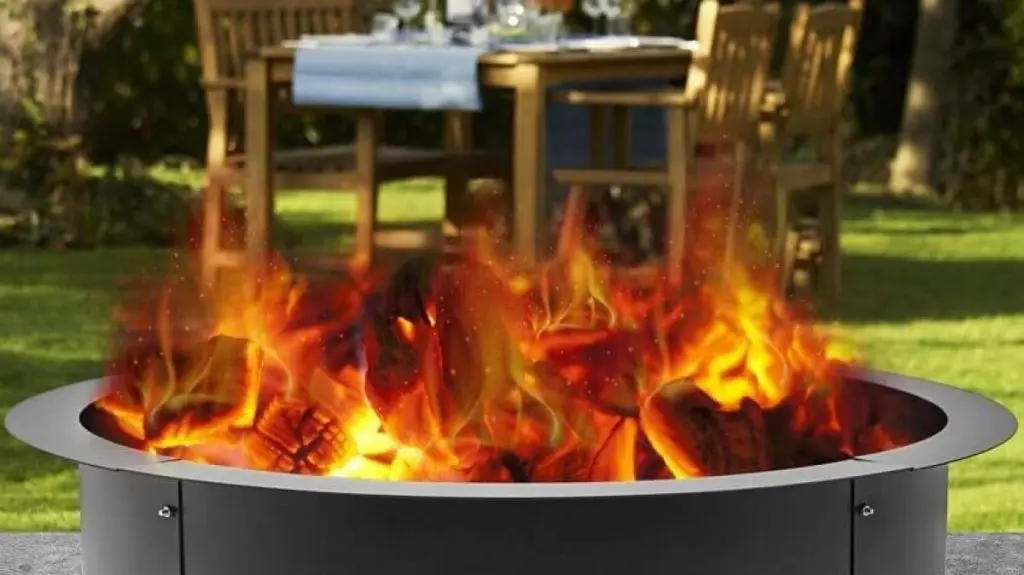
In conclusion, smokeless fire pits are innovative devices that effectively reduce smoke production during outdoor fires. By optimizing airflow, utilizing double combustion chambers, and carefully selecting firewood types, these fire pits create a more enjoyable and comfortable environment. Their design features, such as angled fire grates and strategically placed vents, contribute to the reduction of smoke and enhance the overall fire experience. Smokeless fire pits not only provide a cleaner and healthier alternative to traditional fire pits but also offer improved efficiency and performance.
Summary Of Smokeless Fire Pit Mechanisms
Smokeless fire pits employ several mechanisms to reduce smoke production. These include optimized airflow, the use of a double combustion chamber, careful selection of firewood types, and strategic design features. By allowing for better oxygen circulation and maximizing heat transfer, smoke is minimized. The double combustion chamber enhances burning efficiency and further reduces smoke. Choosing low-smoke firewood types can also significantly impact smoke levels. Additionally, design elements like angled fire grates and well-placed vents contribute to smoke reduction. Smokeless fire pits provide a cleaner and more enjoyable fire experience.
Benefits Of Using Smokeless Fire Pits
Using smokeless fire pits offers several benefits. Firstly, these fire pits provide a cleaner and more enjoyable fire experience by significantly reducing smoke production. This means you can gather around the fire without being constantly bothered by smoke. Additionally, smokeless fire pits are more environmentally friendly as they release fewer harmful pollutants into the air. They also contribute to a cleaner and healthier outdoor environment by minimizing air pollution. Moreover, smokeless fire pits can be used in areas with strict fire regulations, making them a convenient option for various outdoor settings.
Reference To Environmental Impact And User Experience
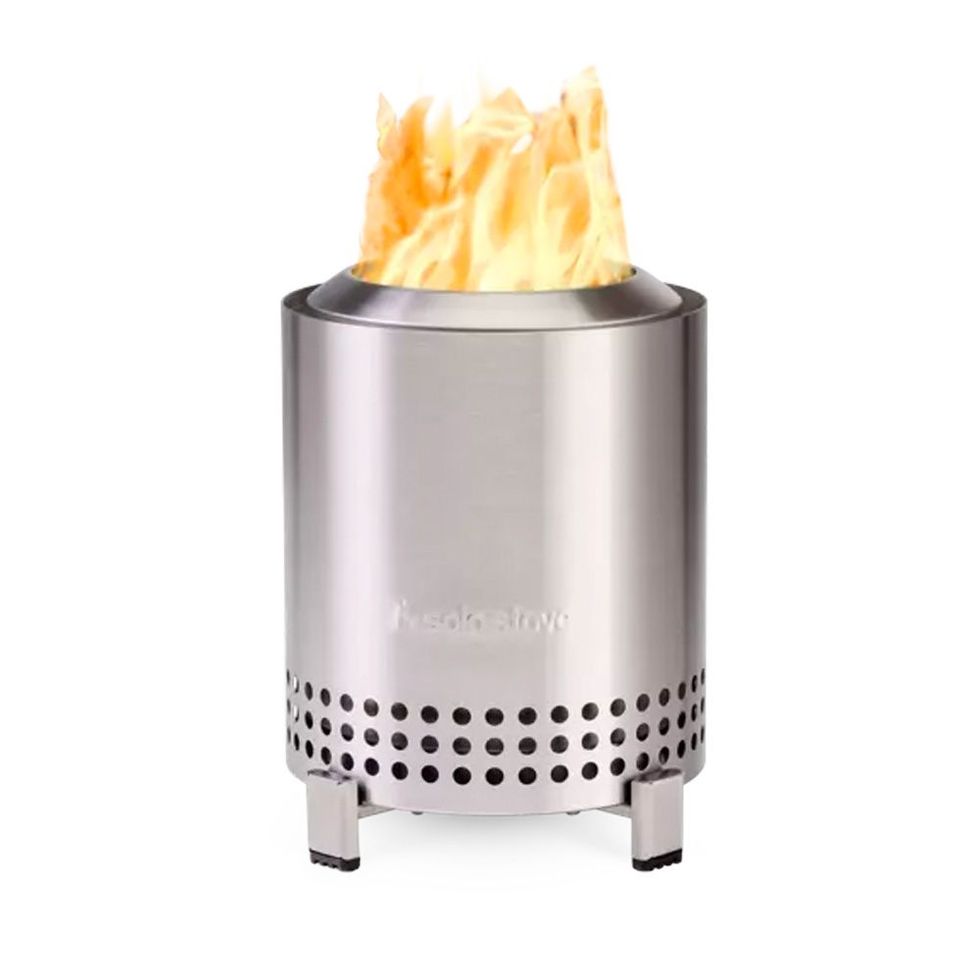
Smokeless fire pits have a positive environmental impact by reducing air pollution. By minimizing smoke production and harmful pollutants, these fire pits create a healthier outdoor environment. Users also benefit from a more enjoyable fire experience without smoke constantly bothering them. Gatherings around a smokeless fire pit become more comfortable and enjoyable. Additionally, the use of smokeless fire pits in areas with strict fire regulations provides a convenient and safe option for various outdoor settings. Experience the benefits of reduced smoke and improved environmental impact with a smokeless fire pit.
FAQ About How Smokeless Fire Pits Work: Understanding Smoke Reduction Mechanisms
Q: What are smokeless fire pits?
A: Smokeless fire pits are designed to reduce or eliminate smoke production during a fire burning by incorporating various mechanisms that enhance combustion efficiency.
Q: How do smokeless fire pits work?
A: Smokeless fire pits work by promoting secondary combustion of smoke particles using features such as double-walled construction, air intake systems, and optimized fuel management to achieve a more complete burning process.
Q: What is the role of air flow in smokeless fire pits?
A: Air flow is crucial in smokeless fire pits as it helps in fuel combustion by providing oxygen for the fire. Controlled air intake and airflow patterns facilitate the burning process and significantly reduce smoke emissions.
Q: Are all smokeless fire pits completely smoke-free?
A: While smokeless fire pits are designed to minimize smoke, complete smoke elimination may not always be achievable. Factors such as fuel quality, weather conditions, and operational variables can affect the level of smoke reduction.
Q: Can smokeless fire pits be used indoors?
A: It is not recommended to use smokeless fire pits indoors due to the potential health hazards associated with indoor smoke and carbon monoxide buildup. Smokeless fire pits are best suited for outdoor use in well-ventilated areas.

Stutts House of Barbecue is a haven for BBQ enthusiasts, offering a delectable array of smoked delicacies, including ribs, beef, bologna, and chicken, accompanied by all the trimmings you could ever dream of. Our passion for perfecting the art of smoking meats shines through in every savoury bite. At Stutts House of Barbecue, we take pride in our custom smoking techniques, ensuring that each piece of meat is infused with the perfect blend of smoky flavours. But it doesn’t stop there – our homemade desserts are the cherry on top of a delicious meal, adding a sweet finish to your BBQ experience.